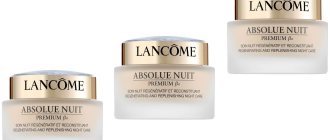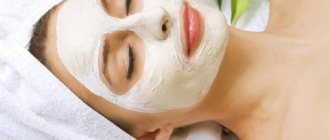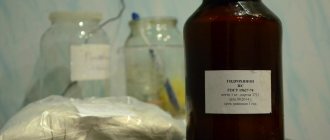What are liposomes
The lion's share of popular cosmetics for preserving and restoring youthful skin does not provide the declared effect. The capabilities of the popular products are limited to creating a protective film on the dermis and improving its appearance. In the matter of eliminating the problem, contrary to the consumer’s opinion, such cosmetics are powerless: the active substances in its composition simply cannot penetrate into the deeper layers. At the same time, there is a high risk of irritation due to the interaction of components with ultraviolet radiation.
Liposomes behave differently: artificially created container bubbles (vesicles), inside of which there is a hydrophilic environment, penetrate as deep as possible into the dermis, right down to the subcutaneous fatty tissue. In this case, the epidermal cells are not destroyed, but, on the contrary, are restored. Simply put, liposomes create a healing effect.
Vesicles are obtained by forming a special mixture of active substances and solvents, powder fillers and phospholipids (lecithin), or by treating phospholipids with ultrasound. The walls of the microscopic spheres are similar in composition to the membranes of human cells. Distributed over the surface of the stratum corneum, the liposome is embedded in the epidermis. At the same time, its phospholipids become one with the skin matrix. Since the “opening” of liposomes is a long-term process, the release of the active substances inside occurs smoothly, which ensures the so-called “prolonged action.”
Vitamin C in cosmetics.
If two conditions are met:
- creating stable forms,
- transfer deeper than the stratum corneum.
Ascorbic acid turns into an effective cosmetic asset.
The relevance of using cosmetics containing liposomal and stable forms of vitamin C is determined by another significant factor.
A varied diet, supplemented with special nutritional supplements, will meet the needs of the body as a whole. But will this be enough for targeted skin care for a specific problem, on a specific area of the face? Of course not.
And if we are talking about the correction of age spots, in this case, the superficial use of L-ascorbic acid is 100% more effective than special food additives.
Liposomal and stable forms of vitamin C are used in almost all types of cosmetics, from cleansers to masks.
Properties
The main purpose of liposomes is the formation of a special therapeutic system. When they enter the dermis, the vesicles are divided into fragments, affecting large areas of it. Peculiar “transport agents” have an accumulation effect, which makes it possible to influence the skin’s ability to further natural recovery.
Bioactive substances contained in capsules are delivered under the dermis in two ways - transfollicular and transepidermal. In the first case, the movement of vesicles occurs through hair follicles and sweat glands; in the second, the superficial layers of the dermis take part.
Modern scientists fill the internal environment of the vesicles with all sorts of bioactive substances, which allow them to nourish, cleanse, moisturize and strengthen the natural protective barrier of the dermis, that is, to cover the most painful moments. With the help of liposomes, vitamins, enzymes, inorganic ions, enzymes, amino acids, protein compounds and medicinal substances are administered subcutaneously. Hyaluronic acid, known today, is also one of the sought-after components of “containers”. Since each ingredient reaches its goal in full and unchanged form, the dosage required to obtain the final result is reduced. Competent and regular use of cosmetics with unique capsules is a worthy alternative to surgical cosmetology.
Vitamin C in cosmetics – review of products for facial skin.
Working cosmetics must contain liposomal forms of vitamin C. Almost all professional brands use encapsulation technology and liposomes.
The Cell Fusion brand uses encapsulation and liposomal systems at the level of the concept of creating cosmetics. Also, this brand has a VITA+ line, products containing vitamin C.
Cream with vitamin C for face.
Regenerating emulsion BTX, Cell Fusion.
Effect of application – Anti-age/Moisturizing.
Special anti-aging care: correction of wrinkles, moisturizing and strengthening the lipid barrier of the skin.
This result is due to a unique composition: peptides, hyaluronic acid, collagen, physiological lipids (ceramides and lecithin).
Serum with vitamin C for face.
Oxygen serum, Cell Fusion.
Effect of application – Anti-age/Moisturizing.
Anti-aging effect and correction of age spots. The main assets are L-ascorbic acid and hyaluronic acid, the effect of which is enhanced by the use of encapsulation technology.
Vitamin C face mask.
Multivitamin antioxidant cream mask, Cell Fusion.
Effect of application – Anti-age/Moisturizing.
Anti-aging care, improvement of complexion and brightening effect are due to: retinyl palmitate, various forms of L-ascorbic acid, as well as hyaluronic acid.
The mask also contains other vitamins, providing a synergistic antioxidant effect: vitamin A, in its accessible form - retinyl palmitate, tocopherol.
Moisturizing antioxidant cream mask with a brightening effect, Cell Fusion.
Application effect – Anti-age/Brightening/Whitening effect/Moisturizing.
Special care for moisturizing and brightening the skin - provided by a unique composition: hyaluronic acid, ascorbic acid and arbutin.
The antioxidant effect of the mask is provided by the tocopherol content.
Alginate mask.
Alginate mask that evens out skin tone, Cell Fusion.
Application effect – Anti-age/Brightening/Whitening effect/Moisturizing.
Anti-aging care, improvement of skin tone and lightening are due to the use of: alginate, diatomaceous earth, L-ascorbic and hyaluronic acids.
Cleansing cosmetics with vitamin C.
Vitaminized cleansing milk for all skin types, Cell Fusion.
Effect of application – Anti-age/Cleansing.
Gently cleanses, does not contain harsh surfactants. Strengthens the lipids of the protective barrier. Evens out the microrelief, gives the face a healthy color, and promotes cell renewal.
Cosmetics with liposomes
In cosmetics, liposomes are more often found in professional lines than in products of mass market brands. Such cosmetics do not pose any danger to the skin, even if there is a tendency to allergies, since they are completely non-toxic.
Crema
Liposomes are mainly used in creams for use on overly sensitive skin and signs of aging. In the first case, amino acids, oils and vitamins are delivered to the deep layers, preventing irritation; in the second, the role of active substances is played by coenzyme Q10, collagen and elastin. After penetration, they start the process of inhibiting aging and regenerate the dermis, eliminating networks of fine wrinkles. Often creams are designed for application during the day and evening, that is, they are universal.
Of particular value are moisturizing cosmetics with vesicles, which help water molecules penetrate into the deep layers of the skin and nourish dehydrated cells. The latter retain moisture reserves for at least 2 days.
A high-quality example of a liposomal cream is a product of the Isida brand, intended for simultaneous care of dry/sensitive skin of the face and body. In addition to its moisturizing and nourishing effect, the cream restores damaged areas of the epidermis and eliminates inflammation. Along with lavender, olive, lemongrass and burdock oils, the cosmetic product contains a unique ASD complex, which increases metabolic processes in the dermis.
The advantage of liposomal cream from the Isida brand is its light texture. Viscosity should not be visible. A greasy film on the surface of the cream after opening the package indicates a loss of its effectiveness. To avoid such an outcome, liposomal cosmetics are packaged in containers with a dispenser, which prevents the product from coming into contact with air and oxidizing it.
Liposomes in cosmetology: effective rejuvenation
To achieve the best results for preserving youth and beauty, not only a healthy lifestyle is important, but also the right cosmetics. One of the main factors determining the effectiveness of cosmetic preparations is the degree of penetration of active ingredients into the organs and skin. For this purpose, biological transdermal transport systems - liposomes - have been developed, which are being included in an increasing number of manufactured skin care products.
In recent decades, the use of liposomes in cosmetology has become widespread. Creams with liposomes have a pronounced effect: penetrating deep into the skin, right down to the subcutaneous tissue, liposomes are destroyed and begin to interact with skin proteins and cell membrane lipids, delivering moisturizing and biologically active substances to the skin. By binding to the keratin of the skin, they create a protective layer on its surface, which prevents moisture loss.
Liposomes in cosmetology and their significance
Liposomes are artificially synthesized hollow capsules - microscopic spherical vesicles (bubbles), the membranes of which consist of one or more double layers of a special phospholipid - phosphatidylcholine. The structure of liposomes is similar to the structure of cell membranes, as a result of which the vesicles are easily integrated into the lipid layers of membranes and completely merge with skin cells, which ensures the delivery of the active contents of the liposome to its destination.
Vesicles can vary significantly in both size (diameter from 15 to 500 nanometers) and shape. They can be unstable, changing over time the number of layers, size and shape: small vesicles can form large ones, large ones can divide into smaller ones. However, this has virtually no effect on the quality of the cosmetic effect.
The possibility of using liposomal drugs began to be actively explored in medicine back in the 80s. Thus, liposomal carriers have been developed for hormonal, enzyme, antitumor and antimicrobial drugs, and vaccines. The advantage of liposomal dosage forms has been identified, which is to increase the bioavailability of drugs and prevent their destruction by liver enzymes.
Developers of cosmetic products have become interested in the capabilities of liposomal transport systems, and currently almost every cosmetic brand has liposomal preparations in its arsenal. Christian Dior and L'Oreal began developing a line of liposomal products in the mid-80s. In Russia, the first liposomal creams - gels with vitamins A and E were released in 1992.
Liposomes ensure rapid transfer of active substances to the deep layers of the epidermis and dermis, while the active substances are delivered in full, which makes it possible to reduce their concentration, which avoids skin irritation and allergic reactions.
Benefits of liposomal cosmetics
Cosmetics with liposomes are used to support skin regeneration, in anti-aging formulas, to prevent acne exacerbations and to improve the penetration of active ingredients such as vitamins and their derivatives into the skin. Cosmetics containing hydrogenated phosphatidylcholine can also be used to protect the skin from the sun.
The ability of liposomes to penetrate deeply into the skin makes age-related cosmetics much more effective, and cosmetics intended for moisturizing and nourishing - better, since they deliver moisture and nutrients directly into the cells. Using liposomes, ions of inorganic origin, enzymes, vitamins, enzymes, including coenzyme Q10, and amino acids can be introduced into the skin and subcutaneous tissues.
Cosmetics with liposomes
Creme Aux de Liposomes cream with a rejuvenating effect. The ingredients included in its composition moisturize and nourish the skin, restore the firmness and elasticity of the epidermis, and reduce the number of wrinkles.
Liposomal cream Mirielle from BelCosmetics is suitable for women 30-40 years old and allows you to get rid of the first signs of skin aging. The liposomes and micro-oils contained in it nourish the epidermal cells, restore the healthy structure and color of the skin, making it elastic and velvety to the touch.
Creme Reparatrice Liposomes from Tulipe Doree Paris is a luxury regenerating cream with valuable ingredients. It has a light texture that melts on the skin. Smoothes out fine wrinkles, restores radiance and smoothness to the skin.
Cream from Polish manufacturers with red caviar extract from Exclusive Cosmetics is not inferior to Asian counterparts. Liposomes and salmon caviar extract restore the skin at the cellular level. It is universal in its purpose and can be used both daytime and evening. Recommended for older women (70+).
Hydro Crema Gel At Liposomi d'Acqua from Collistar is a gentle and very effective cosmetic cream for aging skin.
Liposome Multiactive Camomile from Dr Baumann is an effective fluid serum that spreads easily on the skin and is effective from the first minute of application. The active ingredients included in its composition, including liposomes, penetrate deep into the cellular structure, restore normal water-fat balance - one of the important factors of youth - and return the skin to a healthy appearance, smoothness and radiance.
The RX Complex Serum from Le Miuex, a famous Swiss cosmetics company, is designed in a very aesthetic old style - a dark glass bottle keeps the product fresh and protects it from exposure to sunlight, and a glass pipette allows you to dose the product onto the skin. The serum is very effective in combating the first wrinkles.
Cetaphil's Suntivity Sun Protection Cream contains a valuable liposomal complex that cares for your skin. It provides a cooling effect and nourishes the skin, promotes the DNA repair enzyme endonuclease, which helps repair cell damage caused by UV radiation. Thanks to the presence of panthenol, glycerin and vitamin E, it soothes, nourishes and provides long-lasting hydration of the skin.
Phytohormone Liposome serum restores the cellular structure of the skin, restoring its youth. It contains aqueous red clover extract, which stimulates collagen synthesis, as well as cell formation and slows down the process of collagen degradation.
Liposomes in cosmetics can take skin care to a new level, eliminating existing problems from the inside, gently and naturally penetrating into cellular structures and providing a restorative and rejuvenating effect at the cellular level.
Types of liposomes
Depending on the number of shells there are:
- unilamellar vesicles (SV) – have sizes in the range from 0.01 to 1 μm. This group of compounds includes small unilamellar vesicles ranging in size from 0.02 to 0.03 μm and large unicellular vesicles (LUV) ranging in size from 0.05 to 1 μm;
- multilamellar vesicles (MVS) - contain several layers of membranes alternating with layers of water. Their sizes vary from 0.4 to 10 microns;
- multivesicular liposomes (MVV) – their sizes reach more than 1 micron;
- giant unilamellar vesicles (GUVs) – have a size above 1 µm.
The following methods are used in the production of liposomes, among others:
- lipid hydration in the presence of a solvent;
- ultrasound (use of ultrasound);
- injection of solvents, such as ethanol or ether solution;
- reverse phase evaporation;
- pressing through pores under high pressure;
- microfluidization.
The uniqueness of liposomes is characterized by the following properties:
- chemical inertness
- versatility
- biocompatibility
- biodegradability
- virtual absence of toxic, antigenic properties and allergic reactions in response to introduction into the body
- the ability to effectively and, often, purposefully interact with certain cells of a microorganism, delivering substances enclosed in vesicles inside the cells, ensuring a prolonged biological effect of these compounds.
Based on liposomes, she developed bimolecular spherical microcapsules that provide transdermal (intracellular) delivery of substances - alposomes. Alposomes were created by Alpika scientists based on their own patented method of biomodeling of a living cell. The scientific novelty and significance of the methodology is confirmed by Gold medals and Grand Prix of the sixth and seventh international salon of innovations and investments.
This is a new generation of cosmetics, cosmeceuticals, which allows you to solve not only cosmetic problems, significantly delaying the timing of plastic surgery, but also has a therapeutic effect. The miraculous drugs include extracts of herbs from alpine meadows, extracts from algae, extracts of embryonic phytocells, phytoplacenta, natural vitamins, fruit acids and other active ingredients.
Advantages and disadvantages of using liposomes
These structures have many advantages:
- allow the active substance to be administered through the skin;
- can act in different layers of the skin;
- thanks to liposomes, it is possible to achieve a local or systemic effect of the drug;
- increase the bioavailability of the substance introduced into the body;
- allow the use of targeted therapy that targets the cancer site;
- active substances are protected inside liposomes from the harmful effects of external factors.
Microliposomes are widely used in the cosmetic, pharmaceutical and food industries. They are also indispensable for microbiological and biotechnological research, including as models of biological membranes.
We should not forget about some limitations associated with the use of liposomes. These are structures with limited stability and a short half-life. They can accumulate in the liver, and the process of producing them on an industrial scale is quite expensive.








